
War in the North: The Aleutians
Another in the Crusade in the Pacific series.
 |
 |
The video starts out by talking about how different the Aleutians are from the other islands in the Pacific, and how Japanese fishermen were used to the area. The video says some of the fishermen were probably Japanese Naval officers in disguise.
 |
In 1939, the U.S. Army had only 300 soldiers in Alaska. The Navy had one base and one radio station.
Japanese planes head for an attack on Dutch Harbor.
 |
The Japanese did “appreciable” damage to Dutch Harbor and its facilities.
 |
 |
The video then talks about how the feeling on the West Coast was that a Japanese attack was “imminent,” then it goes into the internment of persons of Japanese ancestry living on the West Coast.
 |
Many people felt a Japanese air attack was inevitable.
 |
The video says the entire West Coast became “an armed camp.”
 |
Then it talks about U.S. soldiers embarking from the West Coast to fight in various areas of the Pacific.
 |
Japanese forces take possession of Kiska.
 |
American forces occupy Adak, 250 miles from Kiska (to the west), further from Attu (further to the west).
 |
Building an airstrip in Alaskan areas was harder than building one elsewhere.
 |
Even with that, though, the first airstrip on Adak took only about two weeks to build.
 |
Then it talks about life on the islands for the U.S. soldiers.
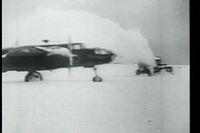 |
Keeping any kind of air base running was very hard with the bad weather, high winds, and lots of snow.
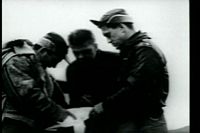 |
There were bombing missions against Kiska and Attu, but everything depended on getting good enough weather to fly. Also, just because weather was good when the pilots went up didn't mean that the weather would be good over the target, getting there or getting back, since the weather changes frequently and suddenly.
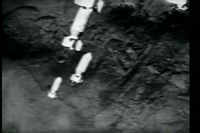 |
Kiska, especially the runway, is bombed.
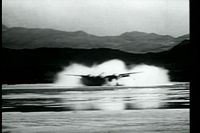 |
Landing definitely wasn't easy. The plume of water the plane throws up is higher than the plane itself.
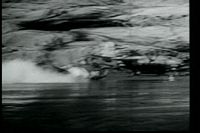 |
A plane does a belly landing, seemingly, possibly due to the water or the ice.
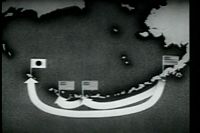 |
May, 1943, Attu is attacked.
The Japanese clothing was more suited to the terrain than that of the U.S. soldiers. The battle went on for 19 days. Around 400 U.S. soldiers died.
Late July, the Japanese abandon Kiska.
Aug. 15th, a U.S. invasion force prepares to assault Kiska, not knowing that the Japanese have already left.
At least some of the U.S. bombing was effective on Kiska before the Japanese left.
Then it talks about Japanese war production and labor shortages. Labor conscription for those over 15 was put into effect. The working day went to 16 hours, with work done seven days a week.
Women became the majority of the workers.
An island further west in the Kurile islands was bombed regularly by U.S. planes. Airfields, fisheries and canneries were the primary targets.
Japanese shipping was also attacked by the planes.
The episode then starts taking for a few moments about New Guinea, but that's the subject of the next episode.
Main Index
Japan main page
Japanese-American Internment Camps index page
Japan and World War II index page
|